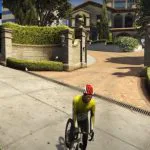As part of the current premier conference and exhibition in computer graphics and interactive—SIGGRAPH 2020—NVIDIA researchers in conjunction with the Visual Computing Lab at Dartmouth College just published a paper depicting ReSTIR.
This is a new raytracing algorithm capable of computing dynamic direct lighting and shadows from a ton of light sources in real-time.
Explaining the ReSTIR raytracing algorithm, Benedikt Bitterli, a Dartmouth Ph.D. student with a 2020 NVIDIA graduate fellowship and also one of the paper’s authors, had this to say:
Our key insight was to reuse information from spatially and temporally adjacent pixels to inform which rays to trace. This idea resembles modern post-process denoising and antialiasing, but while denoising filters the pixel colors directly, we filter probabilities to help guide beams to reduce future noise.
Kevin Margo, CGI Creative Director at NVIDIA, contributed:
This will bring about a sea change for content creation. This research lets us light scenes intuitively, placing arbitrary numbers of emissive objects that cast dynamic shadows, and the lighting ‘just works’ in the renderer.
ReSTIR consistently tests a set of candidate light samples and uses more temporal and spatial testing to leverage information from relatable surrounding pieces.
From the video shown above, this raytracing algorithm showcased the required graphical demonstration while tracing at eight rays per pixel and still rendering scenes containing up to 3.4 million emissive and dynamic triangles under 50ms per frame.
Also, the GPU used was a GeForce RTX 2080Ti not including the Amusement Park scene, which, based on the researchers, demanded higher memory requirements and thereby using a Titan RTX graphics card.
In essence, this methodology is more efficient and 6-60x faster than the previous approaches like Dynamic Many-Light SAMPLING working in Real-Time Raytracing by Moreau et al. (2019).
Another advantage is that filtering and denoising wouldn’t have to be limited to post-processing after rendering, because the ReSTIR raytracing algorithm denoising is included in the core renderer and also part of the PDFs (probability density functions) instead of colors.
Although, based on scientific research, ReSTIR isn’t fully ready for use. The researchers spell out some present limitations their method sustains into when trying to use global illumination from screen space to world space.
However, they also have identified potential solutions for this bottleneck like space hashing.
With all said, it’s more reason to know that raytracing is continually going to be embraced. Think about it, if present-gen Turing-based GPUs like the Titan RTX and RTX 2080Ti already render a ton of dynamic lights in real-time, then the current proposed solution should be a lot easier for the next-gen Ampere-based GPUs. (These types of Ampere-based GPUs are rumored to be way faster in such areas.)
Check back for more updates, since the launch is anticipated to be in September.







